When the midsize crossover market was introduced in 2007, there were not nearly as many models available as there are today. However, the Ford Edge has been popular in the United States, selling over 100,000 cars each year outside of 2009. Most of the millions of people who purchased those cars got reliable midsize crossovers.
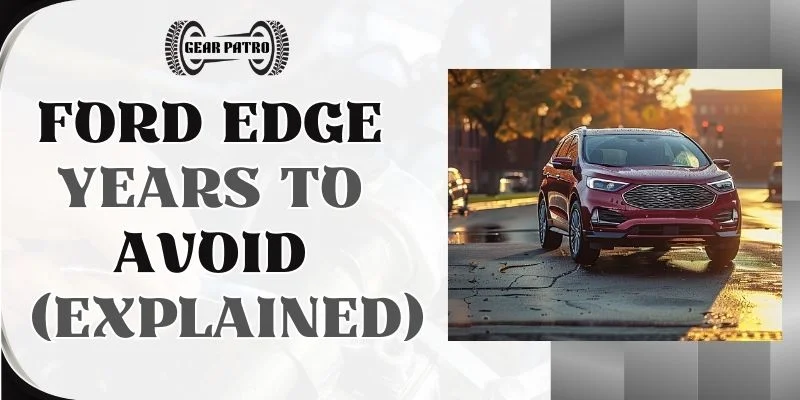
Many of the oldest models are still in use today, having celebrated fourteen or fifteen years of service at this point. Consequently, if you’re looking to buy a used Ford Edge, we’ll help you identify the most reliable model years and avoid the most reliable model years.
The Top Ford Edge Years to Avoid
Based on complaints and reliability ratings on popular websites, the following are some of the worst Ford edge models.
| Ford Edge Year | Number of Complains Received on CarComplaints | Reliability rating on Edmunds ( out of 5) | Reliability rating on J.D. Power ( out of 100) |
| 2007 | 155 | 4.6 | 83 |
| 2008 | 193 | 4.6 | 86 |
| 2009 | 24 | 4.2 | 83 |
| 2010 | 61 | 4.3 | 83 |
| 2011 | 458 | 4.0 | 80 |
| 2012 | 240 | 3.8 | 80 |
| 2013 | 649 | 4.3 | 81 |
| 2014 | 69 | 4.2 | 82 |
| 2015 | 160 | 4.0 | |
| 2016 | 133 | 4.1 | 81 |
| 2017 | 64 | 3.9 | 82 |
| 2018 | 32 | 4.1 | 79 |
| 2019 | 20 | 4.1 | 79 |
| 2020 | 9 | 4.0 | 79 |
| 2021 | 4.0 | ||
| 2022 | 1 | 4.5 | 76 |
2007 Ford Edge
If you’re planning to purchase a new or used Ford edge model, you should avoid the 2007 model. It has a number of faulty parts that can cause minor irritations to major problems.
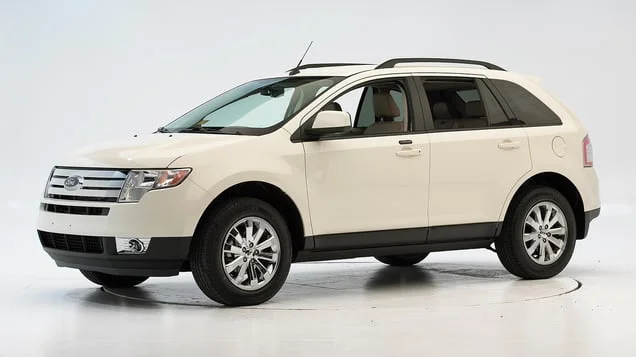
Transmission failures, electrical system problems, and jerking are the most common problems encountered with the 2007 Ford edge. Other problems include brakes, suspensions, and cooling. You would never want to buy the 2007 Ford edge due to its inefficiency.
2008 Ford Edge
Second worst clunker model, with quite a few of the same issues as its predecessor. The alternator, battery, and starter were also malfunctioning on this model, in addition to the transmission, air conditioning, and electrical issues.

It has also been reported that some users have experienced water pump failures because of a malfunctioning heater. Even though these parts can be repaired or replaced, it can be costly, particularly if you’re buying a used model.
2011 Ford Edge
It was part of the first-generation Ford Edge and had problems with its transmission and engine. CarComplaint has over 400 complaints about the vehicle, including door ajar light on, loss of power, and sudden shutdowns. The brake pedal felt spongy for some users and the transmission jerked and slipped during shifting gears.
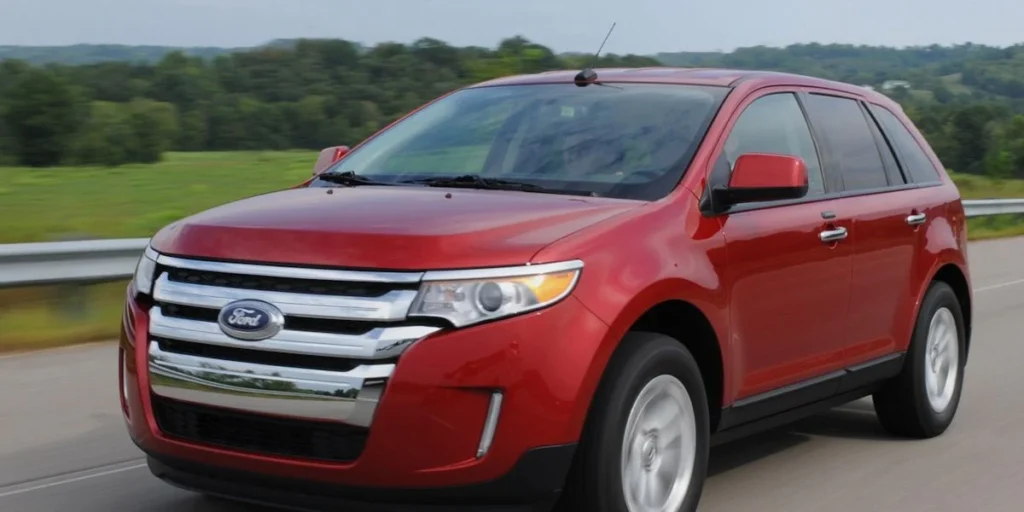
2012 Ford Edge
According to 200 complaints, the 2012 Ford edge is an unreliable model. During shifting gears, this model typically slipped or jerked, and the air conditioning provided insufficient cooling. Additionally, it causes a problem with the power booster and makes a clicking noise.
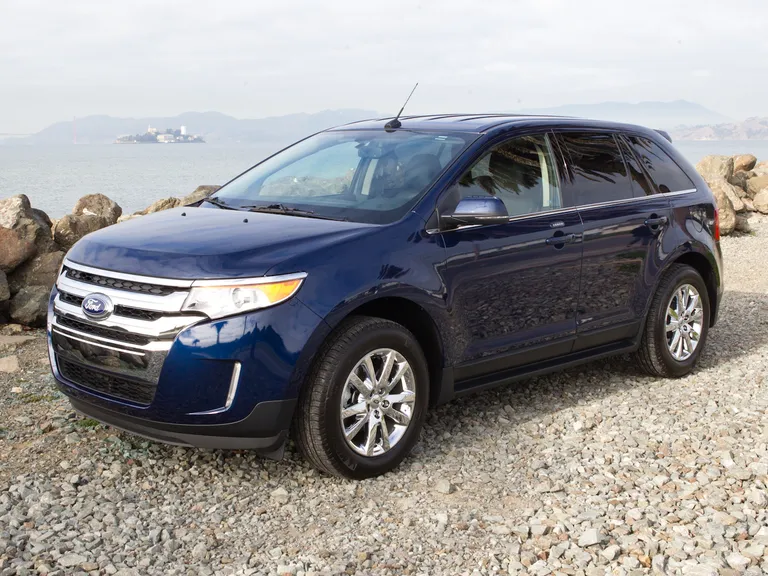
2013 Ford Edge
There were more complaints about the Ford edge SUV (600+) than any other Ford edge model, making it the worst Ford edge to buy. This model has a faulty electrical system as its main problem.
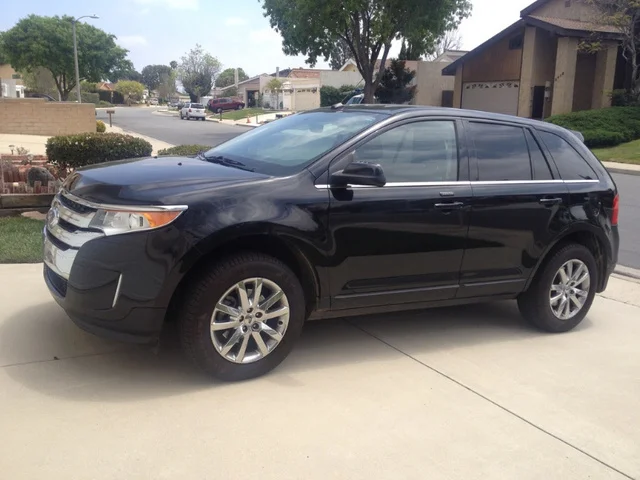
A $400 repair is needed to fix the door light which stays on after closing the door. Approximately $5,000 is required to repair the leaking coolant. Transmission problems, power booster problems, and clicking noises are other problems. In spite of its comfortable ride and spacious interior, the 2013 Ford edge will not be worth buying after knowing those problems.
2015 Ford Edge
In 2015 Ford Edges, the engine is the main problem. Several engine failures, stalling, and power loss were experienced by the owner. If you buy this model, you may need to spend thousands on repairs.
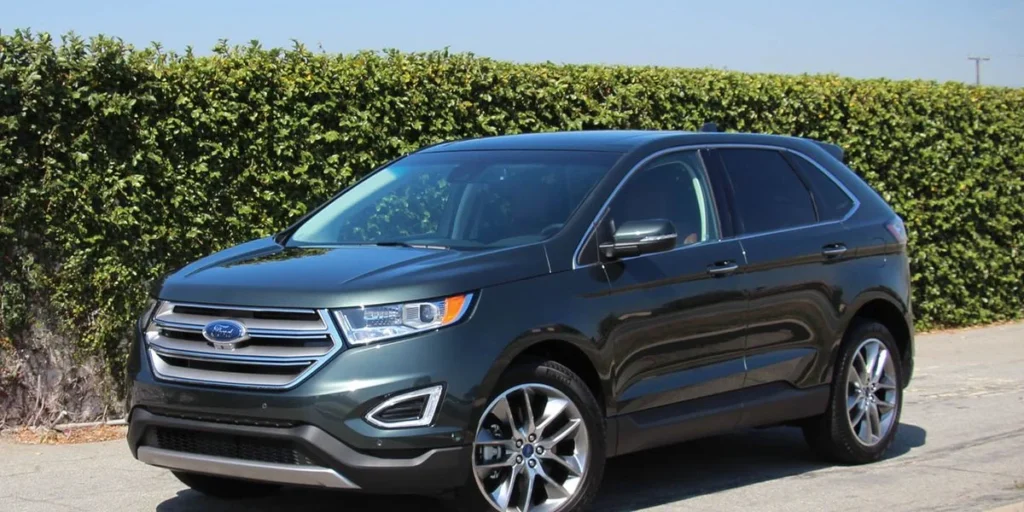
Additionally, its vista glass cracks easily, costing about $1500 to replace. Rebuilding and resealing its oil pan may also be necessary. As well as a faulty electrical system that led to engine death in the 2015 model, there was also a notorious electrical problem.
2016 Ford Edge
One of the main problems with the 2016 Ford edge is its fragile rear window and vista roof glass panels that tend to shatter suddenly. Several engine-related problems affect the model, including engine stalling during driving and oil leaks. Consequently, if you want to buy a Ford Edge SUV, you should avoid the 2016 model.
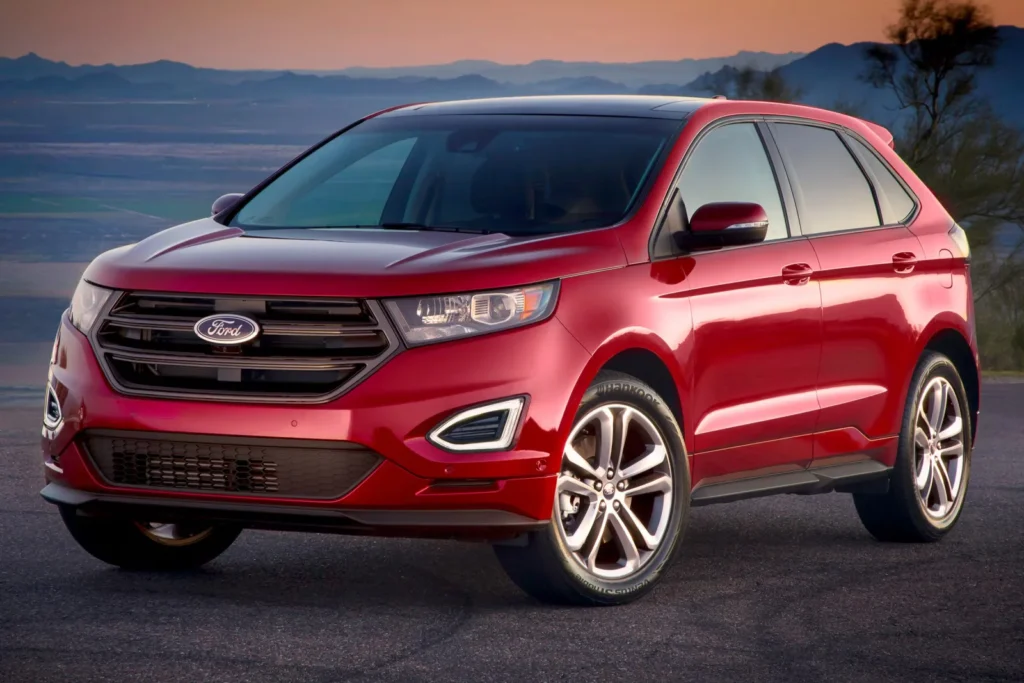
Avoid 2007, 2008, 2011, 2012, 2013, and 2015 Ford Edge Years
In order to qualify as a high-quality vehicle, the Ford Edge had to go through some growing pains and get the bugs worked out. It was alarmingly common to experience transmission, engine, and brake problems in 2007 and 2008. It doesn’t even begin to address the myriad of other issues we will discuss later.
In this period, the more popular Escape and Explorer SUVs had similar if not lower complaints, suggesting that these vehicles were rushed into production before they were ready.
In a few model years, Ford turned the ship around. There were still some problems in 2011, with problems with the engine, brakes, and transmission. A faulty door sensor permanently believed that the passenger door was open was the most common problem reported.
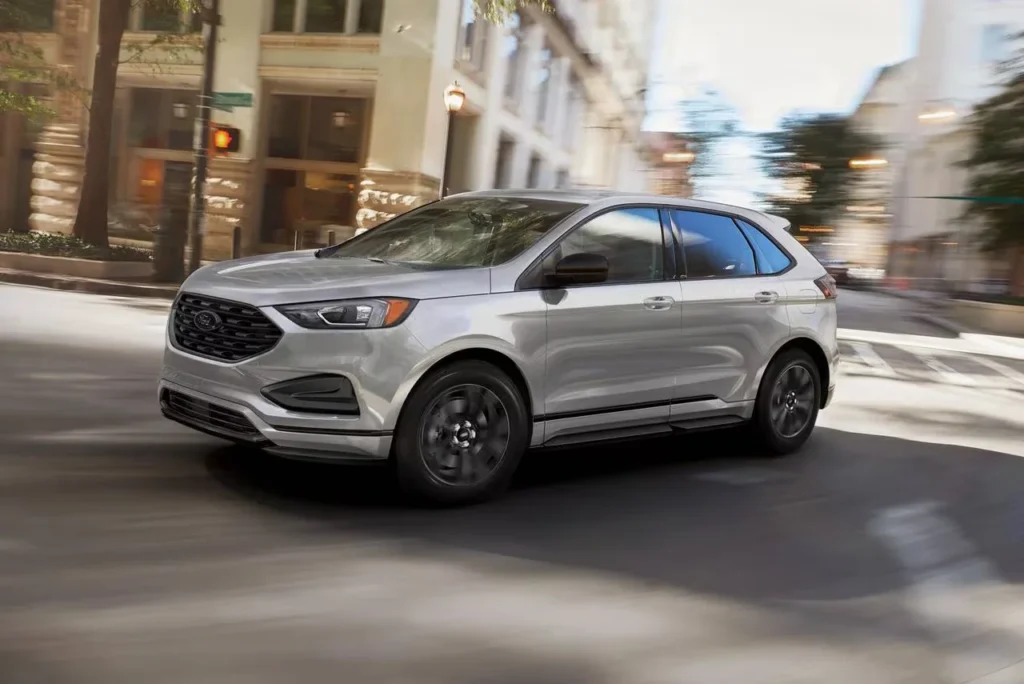
The issue was not the most serious and not the most expensive to fix, but it was still an inconvenience and cost a few hundred dollars, and it was a common complaint. Additionally, the brake pedal of the 2012 model year was problematic as well.
It was the 2013 model that had the most complaints of this problem, along with an engine that stalled or failed. Ford Edge model years 2007, 2008, 2011, 2012, 2013, and 2015 were the worst in terms of performance considering how good the other years were.
Which Model Years of Ford Edge Are Safe to Buy Used?
In the second and third years of production, complaints dropped by about 90%, indicating that the 2008-2009 improvements made a difference. It was the brakes that were most commonly reported as a problem with the 2009 Edge.
Despite the fact that brakes are crucial to a safe functioning car, there were only three complaints: two said the pedals were hard, and a third said they were terrible.
The brakes didn’t fail to stop the car; it was more of a matter of taste. Although you should be aware of this when testing the 2009 Edge, you shouldn’t let it deter you. Some complaints in 2010 were more severe, such as the engine stalling or dying or a faulty brake booster making it difficult to apply the brakes. Despite this, engine problems were relatively uncommon, and far fewer complaints were made than in the past.
In 2011, after a facelift, the Edge had more problems until the last model year before it was discontinued. 2014 is not an Edge model year to avoid, but it wasn’t perfect either. There were a few complaints about a malfunctioning sensor still believing the door is ajar, but the number of reports has gone from triple digits to single digits in 2014. Furthermore, the radio didn’t work consistently, the heater didn’t work correctly, and the rear windshield was breaking for no apparent reason.
After a few hiccups and an embarrassing number of complaints, the second generation of the Ford Edge rolled off the assembly line with some wondering if it needed to be redesigned. Over time, Ford has made better models as a result of sticking with it. Oil leaks and engine stalls were fewer in 2016 than in 2015.
The rear windshield still had some issues, and the sunroof window cracked for no apparent reason, but overall, the 2016 had fewer problems than the 2015. The fact that there have been very few complaints about these models since 2017 may be due to their newness. Its stylish facelift hasn’t held it back.
Which Model Years of Ford Edge Should You Avoid?
Especially with its transmission, the Edge struggled out of the gate. A power transfer unit failed, the transmission shuddered, jerked, slipped, and failed outright. There have also been reports of the brake booster failure, rotor failure, and coil pack failure.
It’s worth avoiding the 2011 and 2012 model years of the Ford Edge, as well as the 2013 model year. The 2007 Ford Edge was plagued with problems, so you should avoid it. Many owners reported engine and transmission failures in year two, along with even more minor issues than in year one.
A faulty door sensor was introduced with the 2011 facelift. During the next three years, the door ajar light remained on for an extended period of time. It might be forgiven if that was the only issue. The 2011 model was plagued by engine power loss, brake failure, and transmission problems.
Brake problems, engine problems, and transmission problems were less prevalent in 2012, but they were still present in lesser numbers, along with a multitude of complaints about the door ajar sensor. The majority of these complaints returned for the 2013 model, in larger numbers than for the 2011 model. These are the worst Edge model years to avoid because of engine problems, brake issues, transmission problems, and door sensor issues.
Common Ford Edge Problems
Despite its reliability issues, the Ford Edge is an excellent SUV for families. We have, however, found several glaring issues that cannot be overlooked.
Ford Edge Problem Counts By Year
| Model Year: | Problems reported: |
| 2007 | 152 |
| 2008 | 183 |
| 2009 | 20 |
| 2010 | 50 |
| 2011 | 424 |
| 2012 | 214 |
| 2013 | 600 |
| 2014 | 56 |
| 2015 | 137 |
| 2016 | 80 |
| 2017 | 18 |
| 2018 | 9 |
| 2019 | 5 |
| 2020 | 2 |
Why Do Ford Discontinue the Edge?
Ford Edge is a popular mid-size SUV thanks to its combination of space, features, and performance. You can ride into the sunset with this series if you’re an SUV enthusiast. As a result, they will be discontinuing the Edge series after the 2023 model. Is there a reason for their decision?
As a result of their commitment to electric vehicles, they make this decision. EV production is the company’s primary focus. In other words, if you want to buy the latest Ford edge model, you have until 2023.
Best & Worst Ford Ranger Years | Years To Avoid
Best & Worst Ford F-150 Years | Years To Avoid
Best & Worst Ford Explorer Years | Years To Avoid
Best & Worst Ford Escape Years | Years To Avoid
Ford Focus Says Transmission Fault Service Now
Best & Worst Ford Fusion Years | Years To Avoid
Best & Worst Ford F-250 Years | Years To Avoid
Frequently Asked Questions: Ford Edge Years to Avoid
What are the Ford Edge years to avoid when looking for a used vehicle?
It is recommended to avoid Edge years 2007, 2008, 2011, 2012, 2013, and 2015. The transmission, engine, and brake problems associated with these model years are well known.
Why should the 2007 and 2008 Ford Edge models be avoided?
The Ford Edge, which was introduced in 2007, initially suffered from transmission, engine, and braking problems. It appears that these early models were rushed to market because they suffered from a variety of issues.
What improvements were seen in Ford Edge models after 2015?
The Ford Edge has improved with fewer reported issues since 2016. Oil leaks and stalled engines were reported on the 2016 model, but there were fewer complaints than on the 2015 model.
How does the reliability of the Ford Edge vary by generation?
Ford Edge’s first generation was plagued with numerous complaints, but subsequent generations improved. According to the article, newer models have had fewer problems, especially those after 2017.
Are Ford Edges typically reliable?
There have been some reliability issues with the Ford Edge, mostly in the first generation. In this way, you greatly increase your chances of owning a dependable and trustworthy Edge.
How much does a used Ford Edge typically cost?
Ford Edge pre-owned prices are all over the place. A car’s mileage, age, condition, and equipment all play a role in determining its value. According to the CoPilot Price Pulse, the average price for a 2008 Edge is $7,432. However, search for a newer example, and the price increases substantially. Compared to 2008, the average asking price of a 2020 Edge is $29,023.
Conclusion
All Ford edge years are listed throughout the guide, and we suggest which Ford edge years to avoid and which to choose. Now that you have seen how Ford edge SUVs perform in real-life, you should be able to choose the right one. It is important to note, however, that no vehicle is immune from issues. To enjoy the optimum performance from your Ford edge SUV, choose the best model and maintain it properly.
